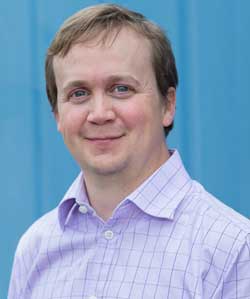Michael’s Story
South London Genomic Medicine Centre
Space satellite engineer Michael Loweth, 38, had never been given a precise diagnosis to explain why he stopped growing when he was 4ft 2in. He is seeking the answer as part of the 100,000 Genomes Project.
Having a diagnosis didn’t cross my mind until I was asked for it on a job application form. My specialist, who I had seen once a year for nearly all my life, hadn’t encountered anyone like me or my brother before. He said what we have may be unique, but he put me in touch with Dr Melita Irving, Consultant Clinical Geneticist at Guy’s and St Thomas’, for a genetic diagnosis. After earlier consultations Dr Irving contacted me about the 100,000 Genomes Project. It seemed like a great chance, so I thought, ‘Why not?’. It will be a nice answer to have – like any other question – but one that will also be useful for the wider scientific understanding. As a scientist and an engineer, that’s important to me. The answers won’t change my life, but they might help other people in the future.

From my perspective, if someone has a similar issue, I hope that my family and I can show that it won’t ruin your life, and in fact it will provide some strange and wonderful opportunities. One of the biggest things my height has taught me is a degree of independence. I problem-solve in everyday life. When I was young, and starting to ask questions, our doctor said to my parents, “You’ve got to make a choice. Do you mollycoddle and protect your sons, or do you let them get on with life?”. My parents agreed they would treat me just like everybody else. It’s what made me have to learn my way. That’s been an important process – learning where my advantages lie and how to use them, how to minimise the disadvantages, and how to solve my own problems. I’m eternally grateful to my parents for doing that, and to the doctor who pointed it out.
The lessons I learned have shown me that my height is not a problem to be solved. Being taller could be useful but then I wouldn’t be me. I’ve coxed at Henley, white water kayaked down Welsh rivers, jumped out of planes on a parachute, worked at NASA, scuba dived in Turkey, and met astronauts and billionaires. I’ve been inspired and I’ve inspired others. I’ve had so many amazing experiences that I know my life has very few limits and some great challenges which I always try to face head-on.
Learn more about how the 100,000 Genomes project is helping patients like Michael find answers.
The answers won’t change my life, but they might help other people in the future
